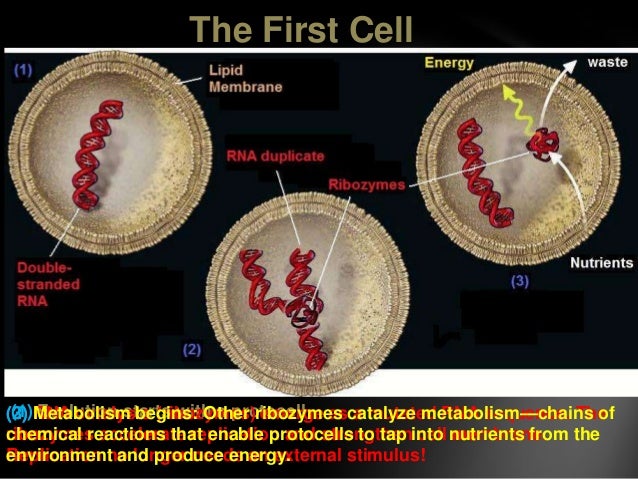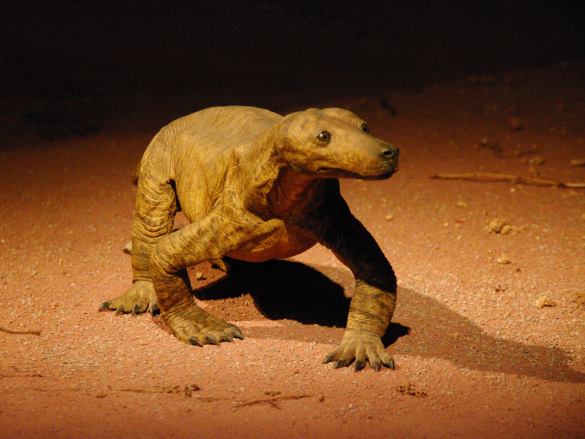From Particles to Men: The Origin of Life
12,000 years ago, the first human structure rose on the hills of Gobekli Tepe, Turkey, and with it the dawn of civilization. And as human advancement blooms, we began to raise questions. Important questions. And one of the most important is "how" - how did we came into being?
| Image 1. Egyptian creation myth |
Many theories bloomed. But first, what's a theory? Contrary to popular belief, maybe even your belief, a theory is not a hypothesis, speculation, or random guesses. A scientific theory is an explanation of an aspect of the natural world that can be repeatedly tested and verified in accordance with the scientific method, using accepted protocols of observation, measurement, and evaluation of results. Where possible, theories are tested under controlled conditions in an experiment. Many theories come, many theories go. Gone are the days of Marduk's heaven kingdom or the literal application of the biblical creation myths. This is the story of Origin, from particles to men.
The Survival of the Fittest
Evolution is change in the heritable characteristics of biological population over successive generations. These characteristics are the expressions of genes that are passed on from parent to offspring during reproduction. Different characteristics tend to exist within any given population as a result of mutation, genetic recombination and other sources of genetic variation. Evolution occurs when evolutionary processes such as natural selection (including sexual selection) and genetic drift act on this variation, resulting in certain characteristics becoming more common or rare within a population.
The genetic mutations on living beings are completely random, and occurs all the time. The selection of what genes are passed and become more common or die out are not random, however. Nature, simply being a hard place to live, is the one and only arbiter that decides the face of lifeforms.
The Survival of the Fittest
| Image 2. Natural Selection |
Evolution is change in the heritable characteristics of biological population over successive generations. These characteristics are the expressions of genes that are passed on from parent to offspring during reproduction. Different characteristics tend to exist within any given population as a result of mutation, genetic recombination and other sources of genetic variation. Evolution occurs when evolutionary processes such as natural selection (including sexual selection) and genetic drift act on this variation, resulting in certain characteristics becoming more common or rare within a population.
 |
Image 3. The evolution of the horse is one of the most
well-documented evidence of changes over time.
|
The genetic mutations on living beings are completely random, and occurs all the time. The selection of what genes are passed and become more common or die out are not random, however. Nature, simply being a hard place to live, is the one and only arbiter that decides the face of lifeforms.
The Primordial Soup
In the beginning, there was nothing. Well, except an unthinkably dense singularity which then expanded rapidly (Big Bang), formed gasses, formed stars, which went supernova, creating complex substances which then formed star systems with planets capable of harboring life, say, Earth. After the Hadean Eon ends (and you can probably tell from the name what the "Eon of Hades" earth looked like),we have these cooled down earth with simple particles floating around in the ocean - we call them the primordial soup.
 |
| Image 5. Miller-Urey experiment. |
In 1952, scientists tried to replicate these pre-life conditions of earth in the groundbreaking Miller-Urey experiment. Within a few hours, the tube is covered with dark substances and when they analyze its composition, the results were astonishing. Amino acids, which were previously thought to be able to be produced by living forms, can form naturally in nature. And we have found other complex molecules in asteroids and various other places. Further experiments produced more and more complex molecules including phosphate backbone, pentose sugar, and nucleobases such as adenine. The ingredients of RNA, or at least, its analogue.
 |
| Image 6. Viroids, independent RNAs |
Strains of ribonucleotide then formed naturally on the surface of montmorrilonite clay - found throughout the world - if we dry and rehydrated the sample. This process easily occur due to rain season or sea tides, and voila, we have our proto-RNA. Actually, we still have variants of them around, such as viroids. These proto-RNAs can also bend and stick with itself, creating unique structures able to produce amino acids including, for a few lucky ones, RNAs proto-RNAs capable of producing its own building blocks, giving it a humungous evolutionary advantage. Meanwhile, on hydrothermal vents below the ocean, we have found fat molecules could naturally occur from H and CO. When there are enough concentration of fat, due to its hydrophobic and hydrophilic nature they will bond together, eventually forming a kind of semipermeable layer which could bend and form a hollow ball, trapping the proto-RNAs inside - voila, proto cells!
Unicellular Life
 |
| Image 7. Protocell metabolism |
The lipid membrane was not stable however, as it can exchange fat with others. But the one with the most complex inside had the greatest capability of sucking off their peers and grew. When they grew large enough, they split - reproduction. Some lucky cell have their ribosomes mutate to form phosphate, which stopped lipid loss and enables internal evolution. For billions of years, cells continuously evolve, developing nucleus membranes, performing endosymbiosis with mitochondria, chloroplast, and other single-celled life to form a more complex cell, etc until we have a world of single-celled world of life with complex perks, such as opisthokonta (cells with flagel).
| Image 8. Proterospongia |
Through mutual symbiosis, cells bond with each other. At first, this is just happen in a limited collection, but overtime they became attached and diversified their function, forming large and increasingly complex colonies. Eventually they reached a phase where they've been so intertwined that they cannot live without each other. This is Holozoa., a clade which now includes everything from mushrooms to human.
Multicellular Life
Overtime, Holozoa evolved and diversified in accordance to environmental demands and evolutionary competitive pressures. A clade diversified to form the Metazoa, or "animals", which has the ability of:
- Consume organic materials;
- Breathe oxygen;
- Able to move;
- Reproduce sexually;
- Grow from blastula during embryonic development.
Separating from clades such as Porifera (e.g corals), Placozoa (multicellular Amoeba-like plate-shaped animal) and Cnidaria (e.g jellyfish), the Bilaterian clade appeared. Bilaterians are animals with bilateral symmetry, i.e they body can be divided into anterior and posterior as well as ventral and dorsal.
Image 9. Haplogonaria, a very simple Bilaterian worm.
|
Bilaterians eventually diversified into Protostome (mouth developed first) and Deuterostome (anus developed first). Deuterostomes then diversified yet again, with the clade Chordata forming. These animals have their neurons concentrated into a chord-like structure allowing for a greater coordination. Craniate clade soon evolved, which were Chordates with skulls giving them a defense and other advantage. Vertebrates finally evolved, who had bone tissue covering and protecting their neural chord (vertebral columns).
Vertebrate
| Image 11. Placoderm fish |
Some vertebrates evolved to grow jaws,. forming the Gnathostomata clade.They evolved into Placoderms, fish with plates as this is crucial especially in the highly competitive Devonian period. But eventually, some fishes lost their armored plates during the evolution while developing hard bones as opposed to cartilages. These fishes are known as Euteleostomi. Placoderms meanwhile has completely extinct in the wild today.
 |
| Image 12. Lobe fins to Amphibian |
A more developed strain of bony fishes, known as Sarcopterygii evolved with lobe fins. Devonian evolutionary pressures pushed the fishes to land, forming the Tetradomorpha clade which had four limbs. Their descendants, the Tetrapods (meaning "four foot") have, well, four limbs and colonized the land, with their most profound evolutionary change from a body breathing and navigating in water to a body enable to move on land. The first amphibians are primarily aquatic, then semiaquatic such as Amphibians, and then evolved the ability to lay egg on land (or later carry it in the womb), known as Amniotes.
Mammals
 |
Image 13. Amniote's Procynosuchus,
the "dog-crocodile".
|
Branching out from Sauropsida (Reptiles and Birds) is Synapsids, and from it and Pelycosaurs (e.g. Dimetrodon) and Therapsids. These animals are warm-blooded, furry, have legs directly beneath their body, and other major differences. All Therapsids has went extinct today except a clade known as Mammals, which nursed their young with milk from their mammary glands. Most mammals are intelligent, with some possessing large brains, self-awareness, and tool use. On of the diverging clade, Therians, give birth to live young without egg (unlike other mammals e.g platypus). Most of their descendants possess epipubic bones, except Eutherians (or Placentalia as the other Eutherians had extinct), allowing the expansion of abdomen during pregnancy and its fetus developed in the uterus until a relatively late stage.
Primates
| Image 14. Primate evolutionary tree. |
Eutherians diverged into clades which, due to evolution, its members today has no real and easily observable differences except genetics, shared common ancestors, and other. After separating with Atlantogenata (Elephants etc.), Laurasiatherian, Rodents, Lagomorphs (rabbit etc), Treeshew, and Colugos, finally the clade Primate appears. Primate skull is large, protecting the large brain which is the characteristic of this group. They adapted to challenges in tropical forests, developing color vision, visual acuity, and are one of the most social of animals. Finally, clades diverged to Haplorrhine (whose upper lip isn't connected to the nose/gum, allowing expressions), which then diverged to Simiiformes (all monkeys), and then Catarrhine (Old World monkeys), then Hominoidea (apes), Hominidae (great apes), and the Homo genus. One surviving species, the Homo sapiens sapiens, possess the ability to use tools, fire, manipulate the environment to their needs, and share information, whether from direct vocals or even electromagnetic waves such as reading a blogpost about evolution.
Conclusion
We are far from uncovering the whole truth. Science are based upon evidences, and we have eliminated baseless or completely misguided beliefs in favor of an explanation that explains all and is based on the scientific method. With time and effort, we are continuously one step closer to the complete picture of the Story of Origins.
Disclaimer: None of the images nor sources belong to the writer. The usage falls under the fair use principle, and its link are accessible.
Sources:
1999. Science and Creationism: A View from the National Academy of Sciences. National Academy of Sciences (US)
Miller, Stanley L. 1953. Production of Amino Acids Under Possible Primitive Earth Conditions. American Association for the Advancement of Science.
Ferris, James P. et al. 1996. Synthesis of Long Prebiotic Oligomers on Mineral Surfaces. Nature.
Al, Rushdi et al. 2006. Abiotic Condensation of Glyceride Lipids and Wax Esters Under Simulated Hydrothermal Conditions. NCBI.
Keeling, P.J. et al. 2008. Organelle Evolution: What's in a Name?. Current Biology.
Hogg, Stuart. 2013. Essential Microbiology (2nd ed.). Wiley-Blackwell.
Allen, Robert Day. 1981. Motility.
Smith, John Maynard. 1995. The Major Transitions in Evolution. W. H. Freeman and Company.
Gilbert, Scott. 2010. Developmental Biology 9th Ed + Devbio Labortatry Vade Mecum3. Sinauer Associates Inc.
Wagooner, Ben. 2011. Vertebrates: More on Morphology. UCMP.
Coates, M.I. 2009. Paleontology: Beyond the Age of Fishes. Nature.
Min, Zhu et al. 2002. Major Events in Early Vertebrate Evolution. CRC Press.
Long JA, et al. 2004. The Greatest Step in Vertebrate History: A Paleobiological Review of the Fish-Tetrapod Transition. Chicago Journals.
Romer, A. S. 1933. Vertebrate Paleontology. University of Chicago Press.
Cornelis, G. et al. 2015. Retroviral Envelope Gene Captures and Syncytin Exapcation for Placentation in Marsupials. National Academy of Sciences of the United States of America.
Pough, F. W. et al. 1979. Characteristic of Primates. Pearson.
2016. Evolution Resources. Washington, DC: National Academies of Sciences, Engineering, and Medicine.
http://www.historyrocket.com/images/Examples-Of-Natural-Selection.jpg





